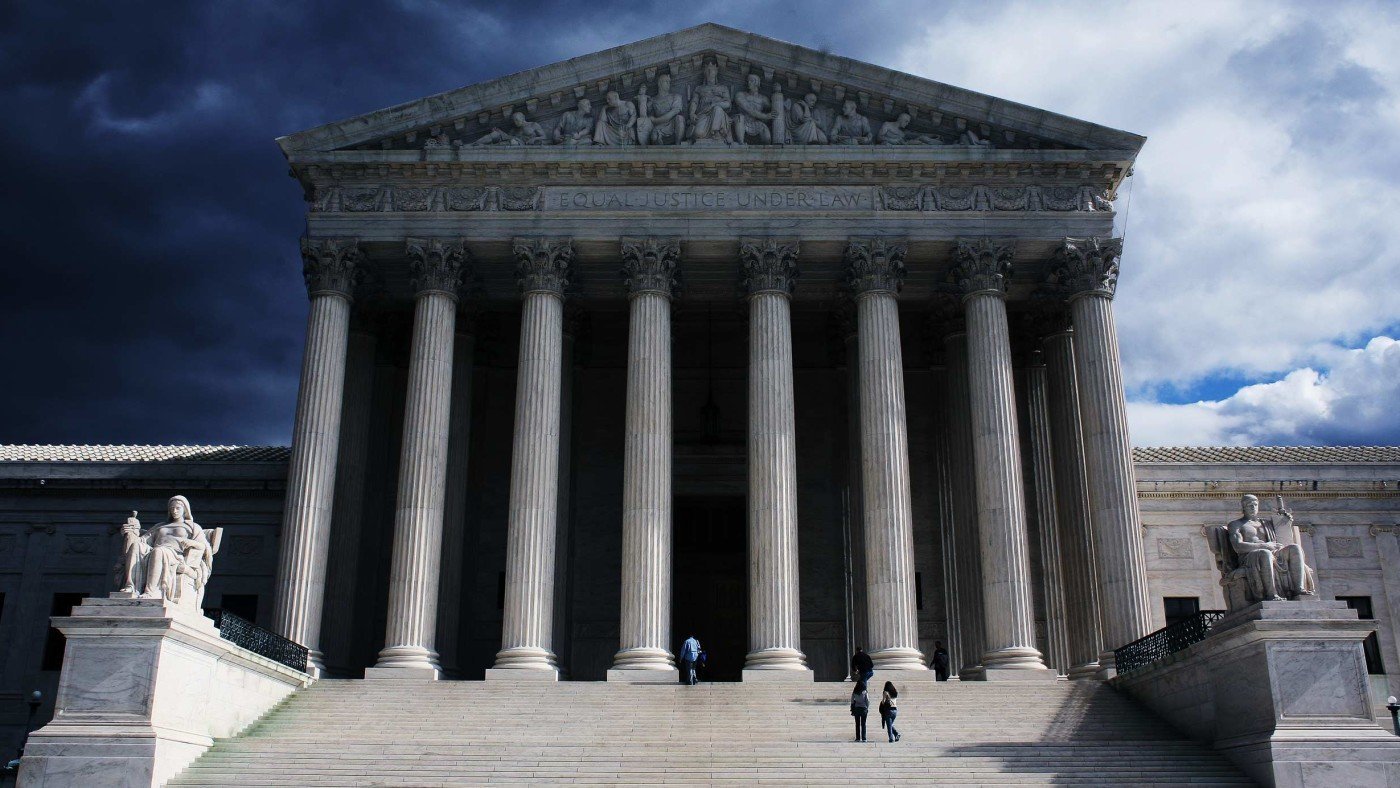Today, the Supreme Court considers whether public sector employees are allowed to opt out of unions. Rebecca Friedrichs is suing the California Teachers Association on the grounds that compulsory union membership violates principles of free speech and association. Friedrichs v. California Teachers Association will be decided by June, 2016.
Friedrichs wants to opt out of the union on the grounds that her dues are used for political purposes. She can reclaim the 30 percent of her dues that are used for overt political lobbying, but not the 70 percent that are used for negotiation—negotiation that is also political in nature. The California Teachers Association negotiates salaries, pensions, class sizes, and tenure—all of which have a political component.
Public-sector unions cannot force government employees to become members but, because all public-sector workers are covered by the same collective-bargaining agreement, employees who opt out still are required to pay agency fees. Agency-fee payers lose some benefits of union membership, such as liability insurance for teachers, but have to pay for all union activities except those that are narrowly defined as political. The line between political and nonpolitical spending is often blurred, leading to constitutional questions over collective bargaining’s violation of the First Amendment.
The teachers union holds that since Friedrichs and other plaintiffs get the benefits of their negotiations, they should not be allowed to stop paying union dues, or they would be “free-riders” on union members. But the plaintiffs are not free-riders, but captive passengers. They have no choice but to pay dues.
Further, the position taken by the teachers union contradicts other efforts by unions nationwide. Over the past few years, the National Labor Relations Board has shrunk the size of potential bargaining units. Unions used to have to gain a majority of employees engaged in the same task at the same company — say, mechanics working for Boeing, or retail clerks working for a department store. In 2014 the Board allowed unions to organize any subset of employees, as long as they had a “community of interest.” Cosmetic workers at Macy’s, or shoe salesmen at Bergdorf Goodman’s, could vote to be represented by a union without the rest of the store going along.
If small groups of workers can vote to be represented by unions without the rest of workplace voting in favor, why can’t groups of workers vote to leave the union? The NLRB cannot have it both ways. If it is going to let small groups opt in to union representation, it should logically allow other groups to opt out.
If the Supreme Court decides for Friedrichs, it would be following the federal government model. Federal government employees are not forced to join the National Treasury Employees Union or the American Federation of Government Employees. No one accuses these federal employees of “free-riding.” It is understood that employment in the federal government does not require union membership, and it should be the same for state government employment too.
This case is important because public sector unions are big donors to state governments. In exchange, officials allow unions generous contracts, including lavish pensions. The size of these pensions is one reason why state governments now hold $5 trillion in debt. Friedrichs does not see why her dues should be used to subsidize this travesty.
A win for Rebecca Friedrichs would be a disaster not only for the California Teachers Association but also for unions such as the SEIU and the American Federation of State, County and Municipal Employees, which receive millions of dollars in additional dues from coerced state government members.
In the 2015 fiscal year, I estimate that the California Teachers Association received $190 million in dues, because average annual dues are $644, and the union reports 295,000 members. If half the members chose not to pay dues, the union would lose $95 million a year, funds that would be hard to replace. Money is power, power used not only for bosses’ salaries but also for political causes.
According to the Center for Individual Rights, which is representing Friedrichs, the CTA spent over $211 million on politics from 2000 to 2009, including $26 million opposing school vouchers.
Public sector employees are the fast-growing sector of union membership in the United States. Although the overall union membership rate is steadily declining, reaching 11.1 percent of wage and salary workers in 2014 from 20.1 percent in 1983, the decline has been driven by declines in private sector union membership. Only 6.6 percent of private sector employees belonged to unions in 2014. In contrast, 35.7 percent of public sector union workers belonged to unions.
If Friedrichs wins, it is fair to predict that union membership will decline dramatically. In Wisconsin, after Governor Walker limited collective bargaining for public sector employees and required annual recertification of unions, union membership declined from 14.2 percent of the state workforce in 2010 to 11.7 percent in 2014. In 2014, Wisconsin had 11,000 fewer union members than in 2013. Over 16 percent of California’s workforce is unionized.
Federal government employees, as well as and private-sector employees in 25 states, are not required to belong to unions as a condition of employment. Let’s hope that the Supreme Court extends this right to state workers as well.


